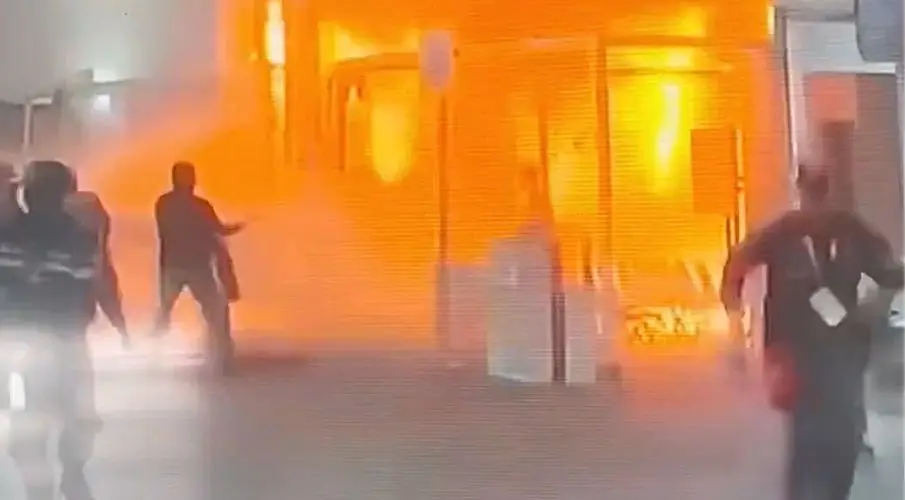Belém - It happens in seconds, yet it changes the mood of an entire summit. Around midday, a fire broke out in one of the pavilions of COP30 in Belém - right in the Blue Zone, the highly secured area where delegates from all over the world negotiate, confer and move between rooms. What at first looked like a technical problem quickly became a scene no one expects to see at a UN climate conference: thick smoke, alarm calls, people who suddenly were no longer talking about climate targets but about how to reach the exits as quickly as possible.
Several people on site described how smoke spread through one of the corridors and security staff urged delegates to leave the area immediately. Videos show flickering flames in an exhibition unit while helpers try to secure the area. It is the kind of incident that throws a major event off balance for a moment - not because of the size of the fire, but because of the symbolism: a place meant to negotiate future safety suddenly in a state of emergency itself. The fire department arrived quickly, emergency teams pushed visitors and delegates out of the affected section and worked to contain the fire. There were no initial reports of injuries, and the extent of the damage remained unclear for the time being. What is certain, however, is that pavilion operations in that part of the Blue Zone were halted until authorities and organizers can assess what happens next.
COP30 is a logistical undertaking of immense scale: tens of thousands of people from governments, science, activism and business move within a confined space, spread across pavilions, negotiation rooms and security areas. An incident like this reveals how sensitive the system is that keeps such a conference running. For the organizers, who have been dealing with oppressive heat, crowded walkways and constant time pressure for days, the fire adds additional strain - and for many delegates a reminder that even in the Blue Zone nothing is completely shielded. It is still unclear what caused the fire and what consequences will follow. Whether technical defects, overload caused by heat and electricity or human error played a role has not yet been confirmed. It is also unclear whether individual exhibitors will lose their presentations or whether the affected section will have to be closed completely.
What remains is an image few expected from a climate conference: people fleeing from a zone overshadowed by a fire in a place where global rescue plans are usually negotiated. For Belém, which has drawn international attention by hosting COP30, it is an incident that raises questions about safety, infrastructure and preparedness - and one that is likely to echo for days, even after the flames are long extinguished.
Investigative journalism requires courage, conviction – and your support.
Please help strengthen our journalistic fight against right-wing populism and human rights violations. Every investigative report, every piece of documentation, every day and every night – all of it requires time, research and legal protection. We do not rely on advertising or corporations, but solely on people who make independent journalism possible. People like you.
Not everyone can give the same amount. But everyone can make a difference. Every contribution protects a piece of journalistic independence.
Updates – Kaizen News Brief
All current curated daily updates can be found in the Kaizen News Brief.
To the Kaizen News Brief In English